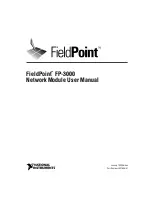
Chapter 8 Configuring VLANs
Management VLANs
8-4
Catalyst 2900 Series XL and Catalyst 3500 Series XL Software Configuration Guide
78-6511-05
Management VLANs
Communication with the switch management interfaces is through the switch IP
address. The IP address is associated with the management VLAN, which by
default is VLAN 1.
The management VLAN has the following characteristics:
•
It is created from CMS or through the CLI on static-access, multi-VLAN, and
dynamic-access and trunk ports. You cannot create or remove the
management VLAN through Simple Network Management Protocol
(SNMP).
•
Only one management VLAN can be administratively active at a time.
•
With the exception of VLAN 1, the management VLAN can be deleted.
•
When created, the management VLAN is administratively down.
Before changing the management VLAN on your switch network, make sure you
follow these guidelines:
•
The new management VLAN should not have an Hot Standby Router
Protocol (HSRP) standby group configured on it.
•
You must be able to move your network management station to a switch port
assigned to the same VLAN as the new management VLAN.
•
Connectivity through the network must exist from the network management
station to all switches involved in the management VLAN change.
•
Switches running a version of IOS software that is earlier than Cisco IOS
12.0(5)XP cannot change the management VLAN.
•
Switches running Cisco IOS 12.0(5)XP should be upgraded to the current
software release as described in the release notes.
If you are using SNMP or CMS to manage the switch, ensure that the port through
which you are connected to a switch is in the management VLAN.
For information about the role management VLANs play in switch clusters, see
the
“Management VLAN” section on page 5-11
.
















































